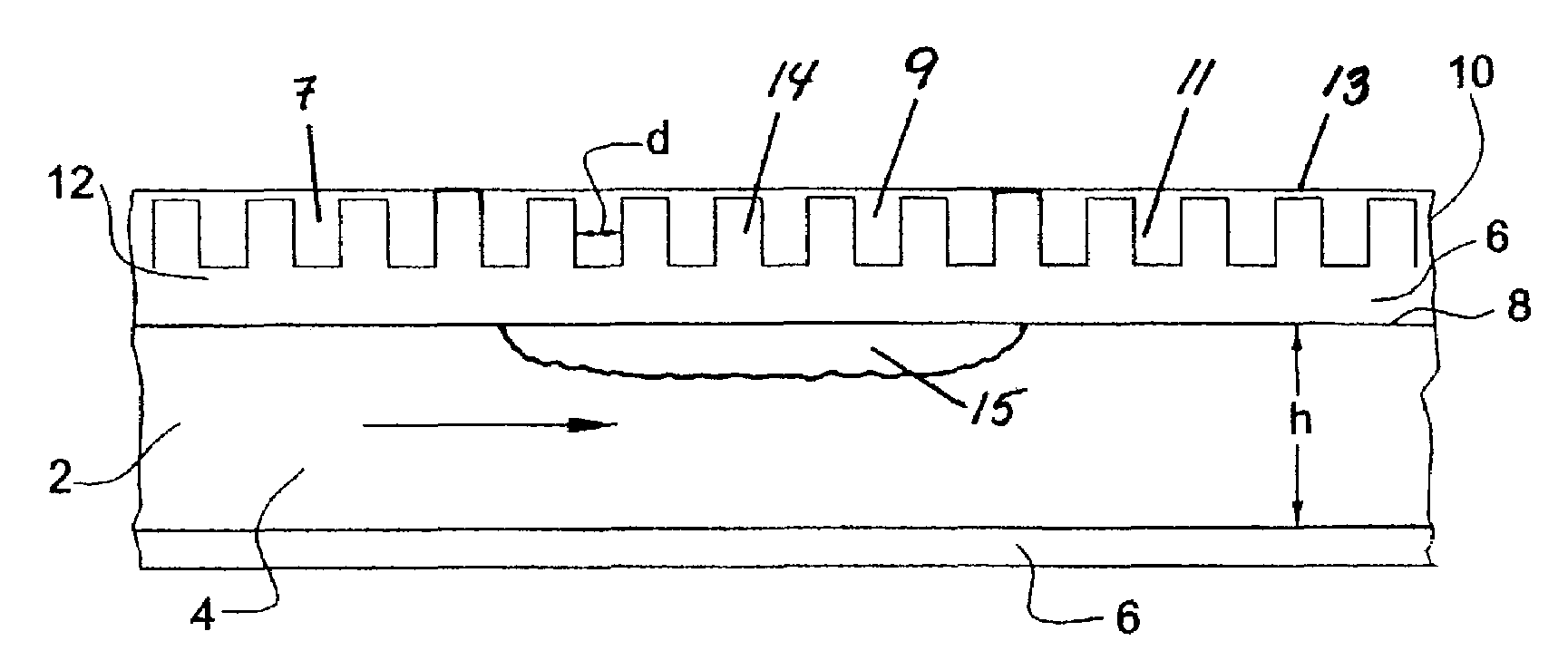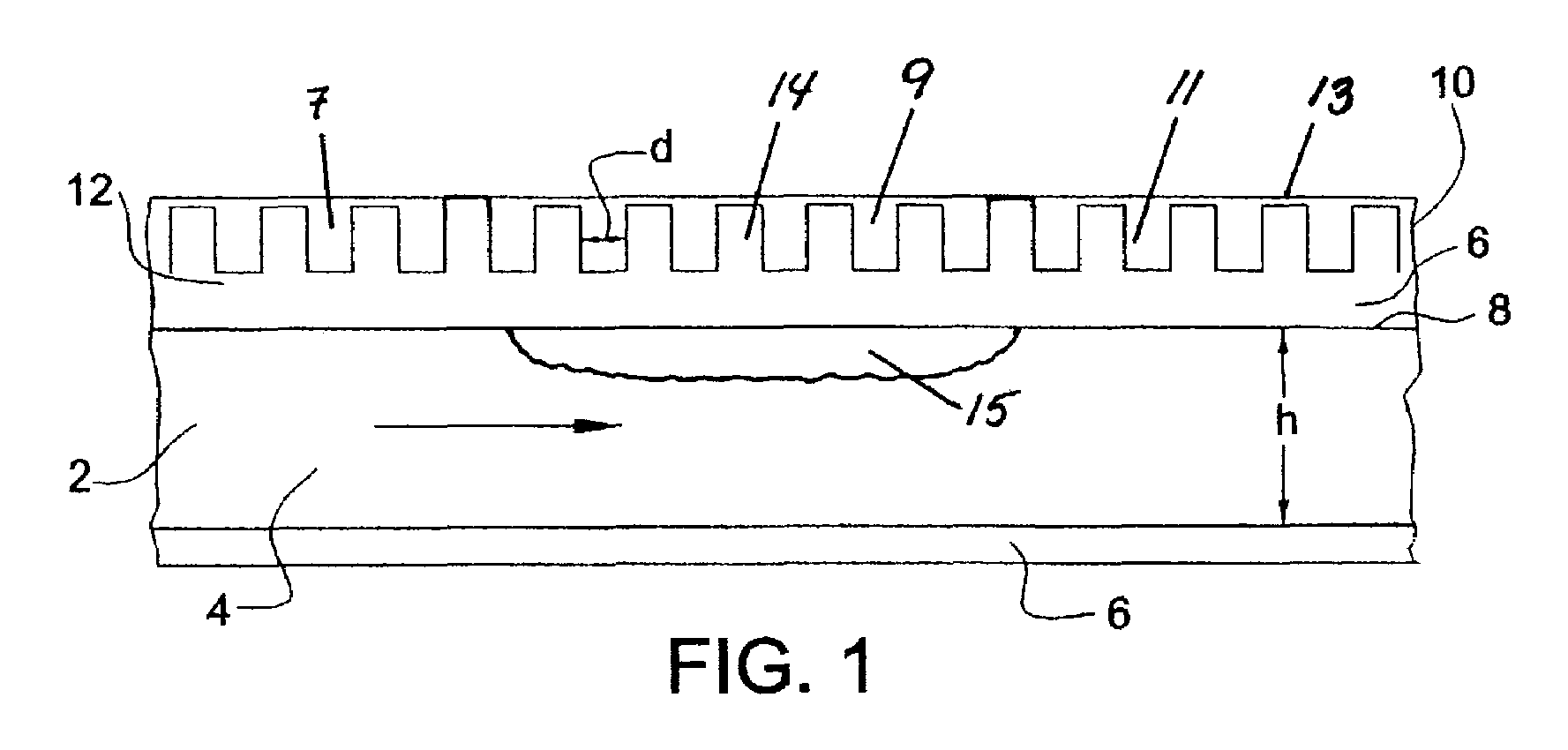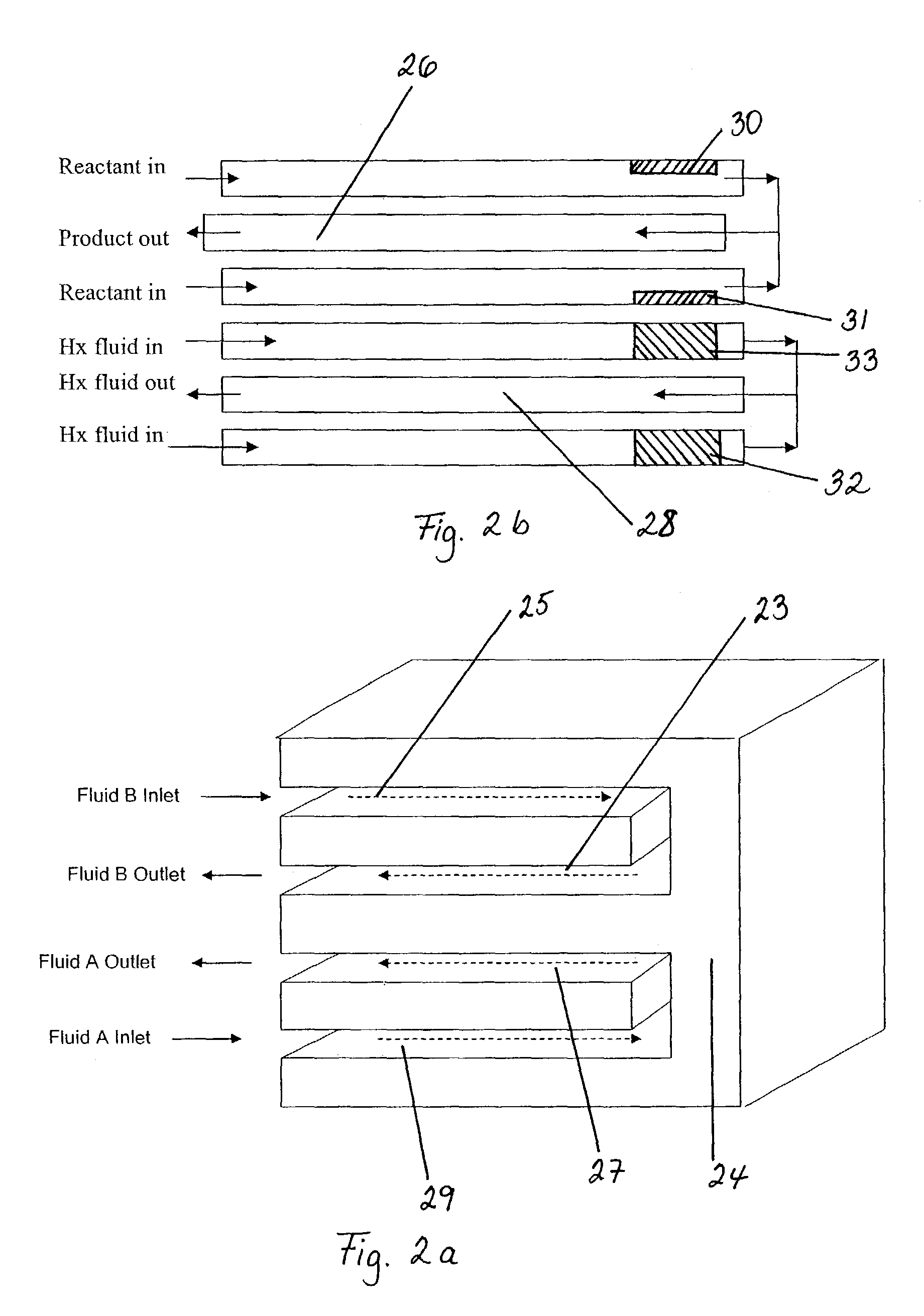Dehydrogenation reactions in narrow reaction chambers and integrated reactors
a reaction chamber and reaction technology, applied in indirect heat exchangers, laminated elements, lighting and heating apparatus, etc., can solve the problems of premature shutdown of equipment to remove coke, reduce product yield, and reduce product yield. , the effect of reducing coking
- Summary
- Abstract
- Description
- Claims
- Application Information
AI Technical Summary
Benefits of technology
Problems solved by technology
Method used
Image
Examples
examples
Catalyst
[0081]The preparation procedure and catalyst composition for Pt / Sn / Al2O3 catalyst was similar to that described in U.S. Pat. No. 4,430,517. The method is based on incipient wetness impregnation of gamma-alumina with aqueous solution of Pt and Sn. Generally, H2PtCl6.xH2O and SnCl4 are dissolved in aqueous solution of HCl forming (PtCl2(SnCl3)2)2— complex. The solution is impregnated and then the water is evaporated from the sample by heating it to 90° C. for 1.5 h and then to 120° C. for 30 min. The catalyst was calcined at 500° C. in a flow of air (80 ml / min) for 2 h. The BET surface area and pore volume of the neutral activated gamma alumina (Aldrich) was found to be 163 m2 / g and 0.26 ml respectively. The concentration of the HCl in the water was made 2.5 wt %. A batch of catalyst typical of that used in these experiments, the amounts were as follows: Pt acid: 0.504 g; SnCl4: 0.165 g; HCl: 0.096 g; H2O: 3.61 g; Al2O3: 14.8 g. ICP analysis: Pt 0.75 wt %; Sn 0.4 wt %; Pt:Sn=1...
PUM
 Login to View More
Login to View More Abstract
Description
Claims
Application Information
 Login to View More
Login to View More - R&D
- Intellectual Property
- Life Sciences
- Materials
- Tech Scout
- Unparalleled Data Quality
- Higher Quality Content
- 60% Fewer Hallucinations
Browse by: Latest US Patents, China's latest patents, Technical Efficacy Thesaurus, Application Domain, Technology Topic, Popular Technical Reports.
© 2025 PatSnap. All rights reserved.Legal|Privacy policy|Modern Slavery Act Transparency Statement|Sitemap|About US| Contact US: help@patsnap.com



